In hard times for media companies, these people are working to bolster Indigenous news coverage in Sask.
Students, publishers hope to bring more stories to the province, but also more Indigenous journalists
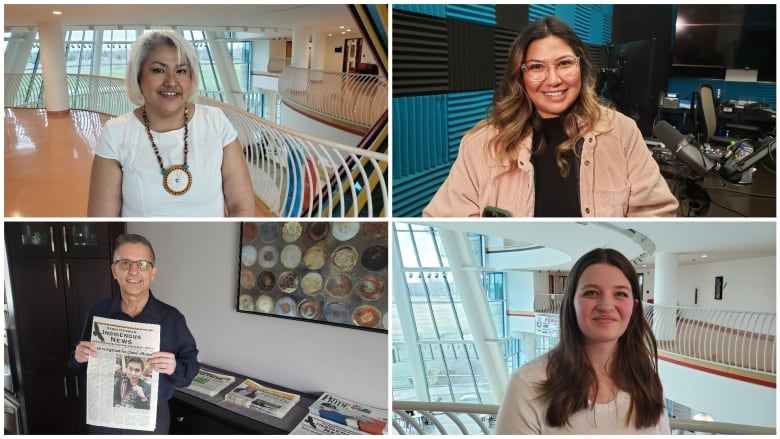
This is part two of a series on the health of print media in Saskatchewan. Click here for part one.
In a small radio studio located in aconverted meeting room on the second floor of First Nations University of Canada (FNUC) in Regina, students put on headphones, adjust microphones and begin checking audio levels by discussing what they had for breakfast.
The students are part of a six-day introduction to journalism and broadcasting course through FNUC's Indigenous Communication Arts (INCA) program.
On this day, they're preparing to cover a powwow. The broadcast will featuring pre-recorded and live segments.
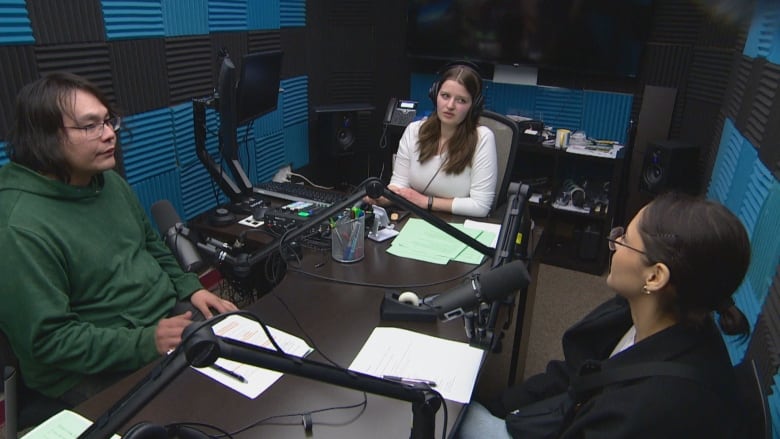
Jaida Beaudin-Herney is one of the alumni helping the students. A graduate of the 2019 INCA class, Beaudin-Herney who is Cree and Mi'kmaw from Membertou First Nation in Nova Scotiahelped create the journalism crash course.
She said she's seen how the media has unfairly portrayed and even dehumanized Indigenous people.
"A lot of the time when we would see Indigenous news stories growing up, it was always being in the token of 'Look at this good Indian,' or 'Look at this bad Indian,'" Beaudin-Herneysaid.
"Our stories weren't getting told. And when our stories weregetting told, we were always portrayed as this 'other.'"
Beaudin-Herney said media organizations need to make more space for Indigenous journalists.
"They like to say they have room for us, but then as soon as we show any signs of our past trauma that has happened to us, usually we're not met with open arms," she said.
Data compiled by the Canadian Association of Journalists (CAJ) in a 2023 diversity survey shows the number of Indigenous journalists across the country has fluctuated in the past few years.
In 2021, 6.4 per cent of employees within newsrooms across the country identified as Indigenous. That number dropped to 4.6 per cent in 2022, then rose to 5.2 per cent in 2023, with just over 6,000 journalists from 273 newsrooms taking part in the survey.
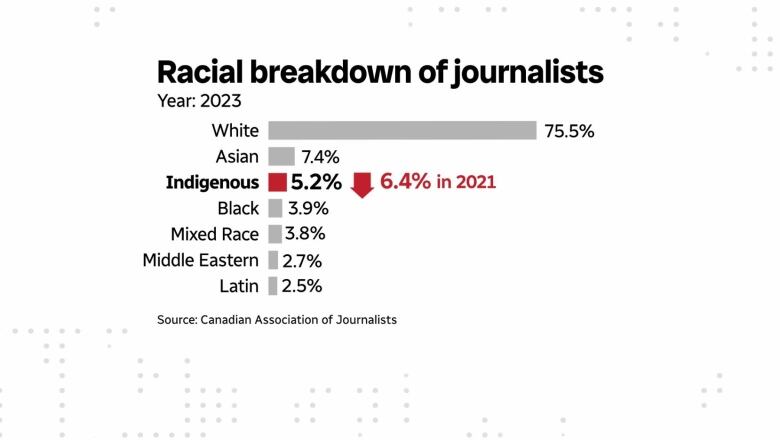
The latest Canadian census shows about five per cent of Canadians identify as Indigenous.
The CAJ report also shows the number of Indigenous journalists in leadership positions has dropped, to 2.4 per cent in 2023 from 4.2 per cent in 2021.
Despite this, Beaudin-Herney is encouraged by programs like INCA and Indigenous-specific news publications.
"You have more opportunities for Indigenous people, but you also have more room for them to be who they are without feeling like they are living in this colonial world that doesn't fit for them."
Publications make the most of changing landscape
Kerry Benjoehas had success in a journalismleadership role.
Benjoe who is Saulteaux, Dakota and Cree from Muscowpetung Saulteaux Nation, about 60 kilometres northeast of Regina is editor-in-chief of Eagle Feather News (EFN), a Saskatchewan Indigenous news publication.
Benjoe took the reins of EFNin late 2021. Sheworked as a journalist in Saskatchewan for around 20 years before that.
She saidIndigenous-focused outlets like hers differ from mainstream outlets because of the way stories are gathered.
"For Indigenous stories to be told correctly, there has to be time allowed for the journalist to explore," Benjoesaid. "We're able to be a little more cognizant of protocol and things like that."
EFN published a weekly newspaper that was distributed across the province for the first 27 years of its operation.
It was forced into hiatus in February after its advertising revenue was depleted due to the Online News Act.
The paper recently re-emerged as a quarterly magazine.
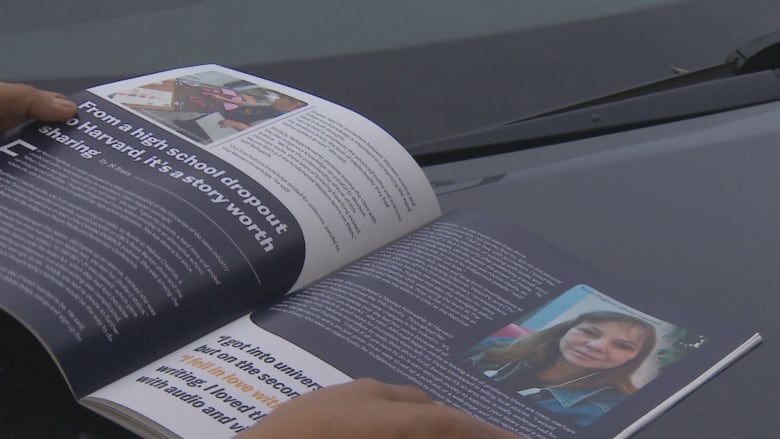
Benjoe saidmany non-profit organizations contacted her when EFN went on hiatus, as their clients relied on the paper to stay connected.
She said there were discussions making the publication online-only, but the team realized many people who read it don't have Internet access.
"They rely on the paper and they want the paper," said Benjoe.
"Our stories are still needed, the public still needs it, the community still needs it, so we're gonna do our best to meet those needs."
Stories central to Indigenous culture
Tammy Cook-Searson knows how important those stories are.
As Chief of the Lac La Ronge Indian Band, Cook-Searson who is Cree lives and works in Saskatchewan's north, among many Indigenous communities.
Cook-Searson said it's important to have coverage in the north outside of Indigenous news as well pointing to fires that threatened La Ronge in 2015.
"We were able to have that direct communication with the MBC [Missinipi Broadcasting Corporation] radio station updating people," said Cook-Searson. "They went in after hours and it didn't matter what time it was because they have a vested interest in the community."
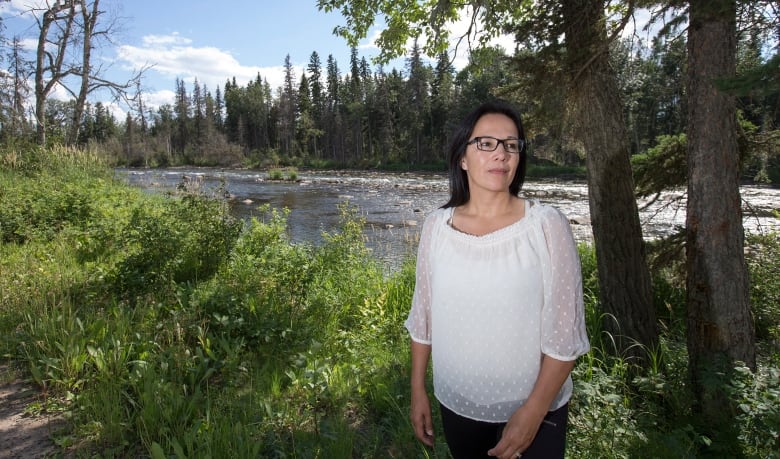
Cook-Searson said the MBC radio broadcasts are offered in Cree and Dene languages many in the north speak.
She said her own community noticed the gap EFNleft when it went on hiatus, because it was one of the few publications that covered Indigenous stories in northern Saskatchewan.
"It's nice to be able to tell our own history from our own perspective," said Cook-Searson.
"There are times where stories can get twisted or misunderstood, so I think it's important to get our stories out there as an Indigenous community, but also as northerners."
Merelda Fiddler-Potter, a former journalist and now assistant professor in Indigenous communications and journalism at FNUC, said stories are central to Indigenous culture.
"That is the key to our history," said Fiddler-Potter, who is Mtis. "It's the key to our knowledge and understanding of protocols and practices.
"Everything you need to know about yourself as an Indigenous person comes from a story somewhere from someone."
She said Meta's decision to block news on its platforms in Canada limits that storytelling, which in turn limits peoples' ability to understand and react to Indigenous and non-Indigenous issues.
"Reconciliation can only really survive if we're able to share those stories, and once we're not, [it] can't," said Fiddler-Potter.
New publications emergingamidst challenging times
Even though Dan Senick isn't Indigenous himself, he sees potential in telling Indigenous stories through his new publication, Saskatchewan Indigenous News.
Senick who also publishes the Davidson Leader and Northern Pride newspapers saidthe idea for the publication came last fall when the Meadow Lake Tribal Council (MLTC) temporarily suspended distribution of the newsletter Northern Pride provided to MLTC's communities.
"We thought, 'Let's try to do a Saskatchewan-wide newspaper based on Indigenous news,'" said Senick.
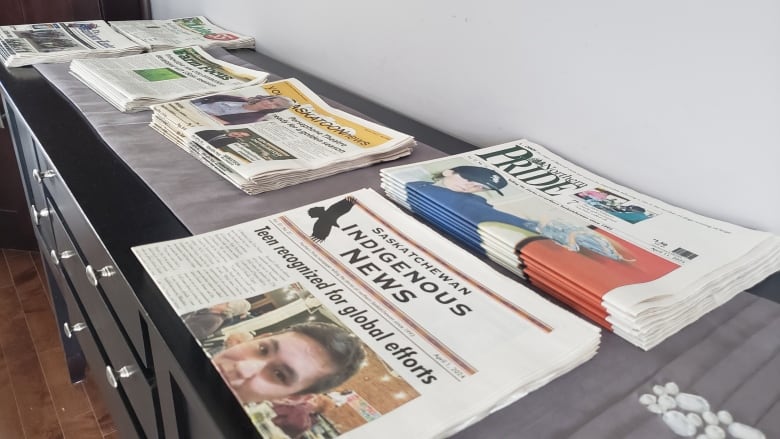
The publication is run out of Northern Pride's Meadow Lake office. The editor there writes most of the stories and co-ordinates the rest from other reporters and freelance writers across the province.
Senick said the monthly paper is meant to profileIndigenous people and sharepositive stories from Indigenous communities.
"These people have untold stories and we're coming across them every day," he said. "It's something we feel should be shared with the readers of Saskatchewan."
Senick says Indigenous-owned businesses can advertise in the paper, which supports its revenue stream.
About 10,000 copies are sent to communities across the province. The publication is starting off asprint-only, so its advertising revenue is not impacted by Meta's ban on Canadian news.
Senick saidthe paper covered the new Indigenous journalism and communication arts degree programlaunched by FNUC in March.
A first of its kind in Canada, the four-year programblends multimedia training with the study of Indigenous issues and language,building on the two-year INCA diploma program offered at FNUCfor nearly 40 years.
The new program's first students will begin this fall. Hannah Scott, a third-year faculty of arts student who was also part ofINCA's six-day journalism and broadcasting course, will be one of them.
Scottsaid she's always been aware of the importance of reconciliation and allyship with Indigenous people and communities.
"I didn't want to be taking up space as a non-Indigenous person, but I knew there was room for me to be someone as an ally and advocate to help raise Indigenous voices instead of standing in the way of that," said Scott.
She hopes to use her degree to work with Indigenous communities in either journalism or communications.
Jaida Beaudin-Herney is encouraged by what she's seeing in the students at INCA's course. It reminds her of when she first started in the program.
"It wasn't that long ago, but it was long enough for me to just be like 'I recognize that little spark in your eyes, let's give you as many opportunities as we can,'" Beaudin-Herney said. "We're throwing things at them and they're just like, 'Yeah I'll do it.'
"Seeing that confidence in this generation just makes me so happy."
With files from Darla Ponace and Moira Wyton















_(720p).jpg)


 OFFICIAL HD MUSIC VIDEO.jpg)
.jpg)



























































































